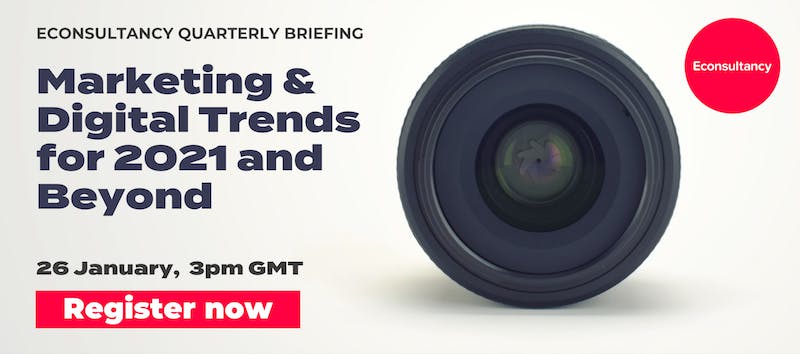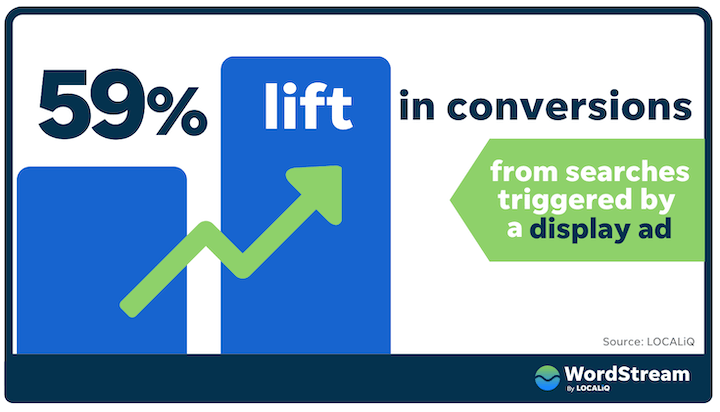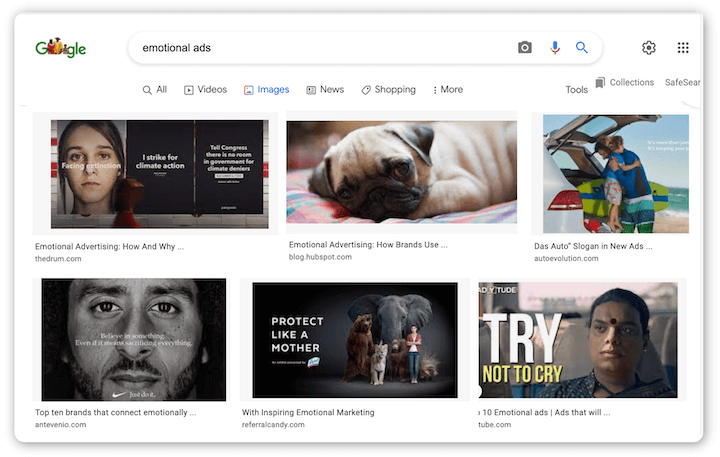“What needs to be avoided is for advertisers to divert their ad spend away from placement across the open internet, where they fund editorial content and provide the financial backbone of web content as we know it today, and diverting it instead toward the “walled gardens” of Facebook and Google – making measurement across the funnel impossible,” he says.
“As a result, advertisers will have to adapt and innovate to ensure they adopt solutions that are both compliant with iOS and end-user privacy needs. Given this, it’s likely that probabilistic data will take on greater weight. As marketers come to terms with many new data related realities, 2021 will be the year where great user experience and great user privacy co-exist.”
The term ‘walled gardens’ is generally understood to refer to the closed ecosystems constructed – and continually expanded – by the likes of Google and Facebook, in which the two companies monopolise user data and attention on their own platforms, and advertisers are forced to spend with the ‘Big Two’ if they want to have access – thus further strengthening their stranglehold on marketing and advertising. Ben Murphy, UK MD at Quantcast, fears that the death of the third-party cookie will prompt advertisers to shift even more spend towards these ecosystems.
“In the year ahead, I hope to see more brands and publishers invest in new technology and strategy that allows for more meaningful, interesting ads. And I hope to see greater industry collaboration too, with more publishers uniting to create powerful joint offerings.”
Going into 2020, the ad industry seemed poised on the brink of a major reckoning regarding its practices, use of data, and methods of measurement and attribution. Surely this would be what dominated the conversation over the course of the year?
Balancing customisation with privacy
Daniel Gilbert, CEO at Brainlabs, agrees that there is a real opportunity for advertisers to build better consumer experiences. “It’s not all doom and gloom for marketers when it comes to privacy – there’s a real opportunity for innovation and a more consumer-oriented mindset towards data sharing,” he says. “We’re going to see some great developments in predictive analytics with lifetime value optimisation taking centre stage, allowing businesses to connect the entire customer journey and keep delivering measurable, personalised experiences.”
“As big tech players lead the way, regulation continues to increase with the passing of the California Privacy Rights Act (CPRA), and regulators (like the ICO in the UK) resume and intensify their investigation into real-time bidding and adtech, the industry will be pushed to prioritise privacy in 2021,” adds Chloe Grutchfield, SVP Product at Sourcepoint. “However, the necessary changes to meet complex regulation-led and tech-led privacy standards mean it will be vital to find new mechanics to continue personalising and measuring campaigns: differential privacy methodologies, edge computing on one end of the privacy spectrum, and identity resolution on the other.
Murphy hopes that the ‘cookiepocalypse’ will prompt brands to focus less on “irritation” and more on meaningful engagement with their audiences. “Instead of relying on quick wins, a cookie-less, premium, user first experience is a move in the right direction for brands. After all, this is what advertising is about: quality engagement with consumers that helps them and genuinely delivers ROI for the brand. It’s about engagement and relevance, not irritation,” she says.
“This move to the walled gardens would be catastrophic to publishers looking to monetise their content and spell the beginning of the end for free, independent journalism.”
“We’re on the cusp of a transition to a completely new era of data privacy, where tech platforms will no longer be able to track users for marketers,” says Gilbert. He believes that first-party data is the way forward: “Advertisers will have to do that themselves by taking ownership over their first-party data – or risk going out of business.”
“In 2021 there will be more options to buy or optimize campaigns based on attention, as measurement has improved dramatically with data collection on mobile. This integration of attention at planning, buying, and reporting stages could be a true game-changer and will replace viewability as an indication of the quality of impressions.”
A focus on quality and the customer experience
The Fundamentals of Marketing Measurement and Analytics
Of course, after Covid-19 became a pandemic, a lot of higher-level concerns were shelved in favour of focusing on pure survival. However, as we come to the end of 2020, with a little more certainty on the horizon thanks to prospective vaccines and the better part of a year spent adapting to the current circumstances, advertisers and marketers are once again turning their attention to the future and what a ‘post-cookie’ world will mean for the industry.
“Publishers will need to explore and quantify the potential of those options, and advertisers will need to participate in that effort and continue investing in media and audiences acquired with a high standard of privacy,” she concludes. “Perhaps more importantly, both advertisers and publishers need to focus on building transparent channels of communication with consumers to establish a fair data value exchange.”
Caroline Hugonenc, Global VP Research & Insights at Teads, predicts that attention will be the new viewability in 2021, while context will be used to improve targeting in a privacy-friendly way. “As the third-party cookie is deemed to disappear, more marketers will leverage context to target consumers in a relevant way,” she says. “Creative technology will enable ads to take different shapes depending on the environment in which they are served.
New forms of measurement and targeting
The question of how marketers will be able to track and attribute their campaigns in a world without third-party tracking cookies has been a prominent theme of discussions over the past two years, with brands and agencies rallying around different solutions, and new options for tracking being put forward.
“We expect login details to be remembered, we expect items to remain in our shopping basket when we leave, we expect sites to remember our favourites – and we do expect to be followed around with an ad for that pair of shoes we looked at but didn’t purchase. At the same time, years of annoying emails, phishing scams, intrusive ads and Netflix documentaries on the power of online data collection have also left us untrusting and at times scared about our online privacy.”
The steady crumbling of the third-party cookie dominated advertising headlines throughout 2019 and the beginning of 2020.
Harmony Murphy, GM Advertising at Ebay UK, believes that a change is “long overdue” for the advertising industry when it comes to its use of tracking cookies. “Third party cookies have been incredibly powerful tools for marketers over the past 20 years – and are still very useful today,” she says. “But they aren’t the be all and end all of ad targeting.”
“With the power of data-driven advertising back in the hands of the publisher, next year we will see them take more control and will see greater collaboration as they work closer together.”
Econsultancy spoke to numerous experts in the fields of advertising and data to get their thoughts and predictions on what lies ahead in 2021. Here’s what they had to say about how the industry might adapt to a world without cookies.
A big moment for walled gardens?
However, Aly Nurmohamed, General Manager at Permutive, believes that walled gardens could hold the key for publishers – if they can successfully construct their own. “When the third-party cookie goes away, every publisher will be forced to work in a closed ecosystem, and this will be incredibly positive for the industry,” he predicts. “Vendors will still have an important role in building tools, but those tools will aid publishers to successfully become their own walled gardens and work with advertisers directly.
While GDPR legislation has gone some way towards resolving this, Read believes that the “cookie issue” will continue to play out, without a definitive resolution, in 2021. “In 2021 we will see Google depreciate 3rd party cookies in Chrome and more pressure put upon this method of tracking peoples’ personal information. The cookie issue will not be fully resolved in 2021, but it will be the year we all have to start planning for a cookieless future and balancing expected online consumer customisation with the necessary privacy and security in place.”
Paul Wright, Managing Director UK, FR, ME & Turkey at AppsFlyer, believes that probabilistic data will play an increasingly important role in mobile measurement and attribution in 2021. “Advertisers will need to follow consumer trends towards mobile if they want to continue attracting and retaining new and existing customers in 2021,” he says. “At the same time, Apple’s changes around IDFA will introduce new challenges and opportunities for the entire industry, impacting how marketers measure and attribute mobile advertising campaigns.

While it was by no means the first time the future of third-party tracking cookies had been called into question, in 2019 the death knell seemed to sound louder and louder with every development: from the release of Apple’s Intelligent Tracking Prevention (ITP) 2.1 for Safari in March, to the stringent new guidance on consent published by the ICO in July, to the EU Court of Justice ruling in October that pre-checked consent boxes for the use of cookies were not valid – and finally in January 2020, the announcement from Google that Chrome would begin blocking third-party cookies by default in 2022.
There is a certain tension between the convenience and personalisation that consumers have come to expect online – which is facilitated by the use of cookies – and the desire for consumers to have control over their data. As Matt Read, Group Head of Digital at Space & Time, notes, “We live in a world now where we are connected all the time, across multiple devices, and there are lots of things we as consumers expect when browsing online.






